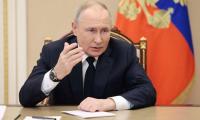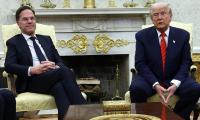Pakistan has been in a precipice of default for the last few months, desperately seeking external help, enacting draconian policies, while refusing to initiate any structural reforms.
About nine months back, when the global commodity cycle was easing out, and interest rates were increasing globally, ample warnings were given for some course correction. An expected increase in interest rates globally was a harbinger of tightening in global liquidity, making it difficult to rollover existing debt, or raise fresh debt in a time of global macroeconomic instability.
The warnings that were doled out in the first half of 2022 went unheeded, and the fiscal profligacy of the government continued without any thought of potential unintended consequences. The sovereign continued with its fiscally irresponsible ways, while the central bank continued to encourage such profligacy through stimulative monetary actions, even though the situation called for an accelerated reduction in fiscal deficits, and to put the house in order.
The government refused to expand the taxation base, and when someone tried to do the same, they were quickly shown the door. As the taxation base remained largely unchanged, real growth in tax revenues is negative as inflation far outpaces any growth in tax revenues.
Precious time was wasted, and is still being wasted. The government, and the usual suspects, continue to pretend that they are living in an environment where interest rates globally are zero, and we are flushed with liquidity, and the country may get a bailout yet another time. Such stubborn behaviour has led to an illusion that the country may get yet another lifeline. But it may not be forthcoming anytime soon, as we have seen lately with considerable delays in the resumption of the IMF programme – something that could have been done about six months back.
Since we did not do any course correction earlier, and continue to believe in unicorns, the chickens are now coming home to roost. The central bank – the State Bank of Pakistan – increased the policy rate to its highest ever level of 20 per cent, and still we are in a deep negative real rate region, signifying potential for another round of interest rate hike. As the interest rate increases, so does the cost of borrowing, and the government is the largest borrower in the country.
Government borrowing makes up almost 70 per cent of the country’s banking assets. Over the years, the government has completely crowded out private-sector credit, as it borrowed to plug perennial fiscal deficits. The government borrows through the banking system through a mix of treasury bills, bonds, sukuks, and other instruments, as well as through its various state-owned entities. Government borrowing through various modes, whether directly, or indirectly is more than Rs22 trillion. The government through its inefficient commodity procurement programmes has also accumulated significant debt to support ill-conceived support prices – the cost of which is also borne by the taxpayer.
As interest rates increase, so will the cost of borrowing, and interest payments on that debt. The government will continue to print more money to pay interest on the accrued debt, and create more debt in the process. It is estimated that if interest rates increase more and the government does not plug its deficit, almost two-thirds of the government budget will inadvertently go towards servicing debt.
Such a rapid growth in debt servicing requirements will squeeze away any room for developmental expenditure. As inflation is expected to top 40 per cent, there will be a pressure to increase government wages, and pensions. This will increase the expenditure side, and lead to further deficits.
In the absence of any plan to reduce fiscal deficit, the ability of the sovereign to keep plugging the deficit with debt is quickly eroding. As debt repayments become unsustainable, the next best option is a move towards restructuring of debt, often referred to as default. A scenario which is already in play in countries like Sri Lanka, Ghana, and Zambia. The common thread between all is a coterie of overconfident policymakers. An event that we could have avoided, and may still avoid, but absence of a plan, and the sheer aloofness of those at the helm continues to push the population of 230 million to a complete economic disaster.
If debt becomes unsustainable, a potential restructuring may be in order, and that would be either deferral of interest payment that the government has to make on its debt, or a potential haircut (reduction in amount), on the debt that is payable to different debt holders.
In the local context, commercial banks are the biggest holders of local government debt, wherein they use depositor money to lend to the government. In case there is a haircut on debt, the commercial banks will have to take significant losses as well, which may affect solvency of many banks, and would shake the foundations of the financial sector at large. Any such event can potentially lead to multiple bank runs, something that should be avoided at all costs.
If a potential restructuring event happens, that will also make other government or government-banked assets susceptible to restructuring, which would basically mean all of the power sector – as the government continues to be the single buyer of power, and has issued sovereign guarantees to cover risk of many power projects. Potential restructuring on that end would further stress an already precarious circular debt scenario.
There isn’t much time left to do course correction. Any further delays in consolidating our fiscal position, and believing in illusions, will push the country and its population over the edge. This is a doomsday scenario that can still be avoided. Consolidation right now can lead to a few tough months, but can save the country from a tough decade that may follow in case more time is wasted.
The writer is an independent macroeconomist.
People of that time believed that an eclipse was a symbol of displeasure of gods
Vertically speaking, dominance of domestic debt in Pakistan’s debt portfolio is haunting
Loss of biodiversity is stark reminder that urban mismanagement is not just infrastructural failure but ecological...
Strong public warning systems can also help ensure quick evacuations in places prone to fires
PPPs in Pakistan's WASH sector face significant regulatory and policy challenges that hinder their effectiveness
Instead, it would have powerful chairman with three-year term, appointed at prime minister’s discretion







